Key Takeaways
1. AI is fundamentally about cheaper prediction
Prediction is the process of filling in missing information. Prediction takes information you have, often called "data," and uses it to generate information you don't have.
Redefined intelligence. AI, in its current form, is not about replicating human intelligence but about making prediction cheaper, faster, and more accurate. This shift in the cost of prediction is analogous to how computers made arithmetic cheaper.
Widespread applications. As prediction becomes cheaper, we'll use it in more places:
- Fraud detection in financial transactions
- Medical diagnoses from images
- Language translation
- Autonomous vehicle navigation
Economic impact. The falling cost of prediction will:
- Increase the value of complementary factors like data, judgment, and actions
- Decrease the value of substitutes, mainly human prediction
- Create new opportunities for prediction in unexpected areas
2. Prediction machines complement human judgment
Judgment involves determining the relative payoff associated with each possible outcome of a decision, including those associated with "correct" decisions as well as those associated with mistakes.
Enhanced decision-making. AI excels at prediction, but human judgment remains crucial for:
- Defining objectives and rewards
- Interpreting predictions in context
- Making final decisions based on predictions and other factors
Division of labor. The ideal human-AI collaboration leverages the strengths of each:
- AI: Fast, accurate predictions based on large datasets
- Humans: Judgment, creativity, empathy, and handling rare or complex situations
Evolving roles. As AI improves, human roles will shift:
- Less time on routine predictions
- More focus on judgment, strategy, and interpersonal tasks
- New roles emerging, like "reward function engineering"
3. AI tools transform tasks and work flows
Tasks need to be decomposed in order to see where prediction machines can be inserted.
Reengineering processes. Implementing AI often requires rethinking entire work flows:
- Break down processes into constituent tasks
- Identify where prediction can enhance or automate tasks
- Redesign workflows to leverage AI capabilities
Job transformation. AI will impact jobs in various ways:
- Augmentation: Enhancing human capabilities (e.g., spreadsheets for bookkeepers)
- Contraction: Reducing certain job components
- Reconstitution: Shifting emphasis on specific skills
AI Canvas. A framework for implementing AI in tasks:
- Define the action
- Specify the prediction
- Determine judgment criteria
- Identify outcome metrics
- Gather input data
- Collect training data
- Establish feedback mechanisms
4. Data is crucial for AI, but not always a strategic asset
Data is often costly to acquire, but prediction machines cannot operate without it.
Types of data. AI relies on three kinds of data:
- Training data: Used to create the initial model
- Input data: Feeds into the model for predictions
- Feedback data: Improves the model over time
Data economics. Consider the following when investing in data:
- Diminishing returns: Each additional data point typically adds less value
- Scale economies: Some applications benefit greatly from massive datasets
- Data moats: Unique, proprietary data can provide competitive advantages
Strategic considerations. Data isn't always a long-term asset:
- Historical data may lose relevance quickly
- The ability to generate new, relevant data is often more valuable
- In some cases, purchasing predictions may be more efficient than owning data
5. AI adoption involves key trade-offs
To derive a real benefit from implementing an AI tool requires rethinking, or "reengineering" the entire work flow.
Speed vs. accuracy. Faster deployment of AI can accelerate learning but may increase risks:
- Early release: Faster improvement through real-world feedback
- Delayed release: More thorough testing but slower progress
Personalization vs. privacy. Better predictions often require more personal data:
- Improved user experience and product performance
- Increased concerns about data security and individual privacy
Automation vs. control. Full automation offers efficiency but raises concerns:
- Reduced human error and faster decision-making
- Loss of human oversight and potential for systemic failures
Innovation vs. regulation. Balancing progress with safety and ethical concerns:
- Encouraging AI development and adoption
- Mitigating risks and unintended consequences
6. AI will reshape business boundaries and strategies
AI can lead to strategic change if three factors are present: (1) there is a core trade-off in the business model; (2) the trade-off is influenced by uncertainty; and (3) an AI tool that reduces uncertainty tips the scales of the trade-off so that the optimal strategy changes from one side of the trade to the other.
Strategic shifts. AI may fundamentally alter business models:
- Changing core trade-offs (e.g., Amazon's potential shift from shop-then-ship to ship-then-shop)
- Enabling new products or services
- Reshaping industry boundaries
Organizational impact. AI adoption may require:
- Restructuring teams and hierarchies
- Developing new capabilities and roles
- Rethinking partnerships and outsourcing decisions
Competitive dynamics. AI could lead to:
- Winner-take-all markets due to data network effects
- New entrants disrupting established industries
- Shifts in the balance of power between companies and their suppliers or customers
7. Societal impacts of AI require careful consideration
The rise of AI presents society with many choices. Each represents a tradeoff.
Job market effects. AI will likely cause:
- Short-term job displacement in certain sectors
- Creation of new jobs and roles over time
- Shifts in skill demands and education requirements
Economic inequality. AI may exacerbate income disparities:
- Potential concentration of wealth among AI owners and skilled workers
- Decreased bargaining power for some workers
Privacy and security. Widespread AI use raises concerns about:
- Data collection and usage practices
- Potential for surveillance and manipulation
- Cybersecurity threats from AI-powered attacks
Ethical considerations. Society must grapple with:
- Algorithmic bias and fairness
- Accountability for AI decisions
- Long-term existential risks of superintelligent AI
Policy challenges. Governments face difficult trade-offs in areas like:
- Regulating AI development and deployment
- Balancing innovation with consumer protection
- Addressing AI's impact on labor markets and social safety nets
Last updated:
FAQ
What's Prediction Machines about?
- AI and Economics Focus: Prediction Machines by Ajay Agrawal, Joshua Gans, and Avi Goldfarb explores how AI transforms decision-making in businesses by enhancing prediction capabilities.
- Framework for Understanding: The book combines economics and AI to help readers grasp the implications of cheaper prediction on business strategies and societal impacts.
- Real-World Applications: It uses examples from companies like Amazon and Tesla to illustrate AI's practical applications, making it accessible for business leaders and policymakers.
Why should I read Prediction Machines?
- Clarity on AI's Impact: The book helps demystify AI, providing insights essential for strategists, managers, and policymakers to understand AI's practical implications.
- Structured Decision-Making Framework: It offers a framework for integrating AI into decision-making processes, emphasizing the importance of understanding AI-related trade-offs.
- Expert Insights: Written by economists with extensive experience in technology and AI, the book combines theoretical knowledge with practical applications.
What are the key takeaways of Prediction Machines?
- Prediction is Central: AI's current wave focuses on improving prediction capabilities, crucial for reducing uncertainty in decision-making.
- AI Implementation Trade-offs: Implementing AI involves trade-offs like speed versus accuracy and autonomy versus control, essential for effective AI strategies.
- Human Judgment's Vital Role: Despite AI's predictive power, human judgment remains necessary for evaluating outcomes and making decisions.
How does Prediction Machines define prediction?
- Definition of Prediction: Prediction is defined as “the process of filling in missing information,” emphasizing AI's role in generating insights from data.
- Role in Decision-Making: Prediction reduces uncertainty, allowing organizations to make informed choices, illustrated with industry examples.
- Economic Framework: The book uses an economic framework to show how better predictions improve decision-making outcomes, highlighting trade-offs.
What is the AI Canvas mentioned in Prediction Machines?
- Framework for Task Analysis: The AI Canvas helps organizations decompose tasks to identify where AI can be integrated, including elements like prediction, input, and feedback.
- Enhancing Clarity: It provides clarity on task components and how AI can enhance each part, facilitating better AI investment decisions.
- Practical Application: The canvas can be applied to scenarios like MBA applicant selection or drug discovery to improve decision-making efficiency.
What are the trade-offs associated with AI as discussed in Prediction Machines?
- Speed vs. Accuracy: Faster predictions may lead to less accurate outcomes, impacting business decisions significantly.
- Autonomy vs. Control: Balancing AI autonomy with human control is crucial for aligning AI with organizational goals.
- Data Privacy Concerns: More data improves predictions but raises privacy and ethical concerns, requiring careful navigation.
How does Prediction Machines address the societal implications of AI?
- Impact on Employment: AI may lead to job displacement, necessitating workforce retraining and preparation for changes.
- Income Disparity: The book highlights potential income disparity from AI adoption, urging policymakers to ensure equitable outcomes.
- Privacy and Ethics: Ethical considerations in data collection and AI implementation are emphasized, encouraging thoughtful navigation to protect rights.
How does Prediction Machines explain the relationship between AI and economic growth?
- Productivity Enhancement: AI enhances productivity by improving prediction accuracy, leading to better business decisions and operations.
- Job Creation: While AI may displace some jobs, it creates new opportunities requiring human judgment and creativity, contributing to economic growth.
- Investment in Skills: The book stresses the need for education and training investments to prepare the workforce for an AI-driven economy.
What are the potential risks of implementing AI as discussed in Prediction Machines?
- Algorithmic Bias: AI systems may inadvertently discriminate, leading to legal and ethical concerns, especially in hiring or advertising.
- Quality Risks: Poor-quality data can lead to inaccurate AI predictions, necessitating reliable and representative data for training.
- Security Vulnerabilities: AI systems are vulnerable to manipulation, requiring robust security measures to protect prediction integrity.
How can businesses leverage the insights from Prediction Machines?
- Rethink Business Strategies: Businesses should identify areas where AI predictions can enhance decision-making processes.
- Invest in AI Tools: Organizations are encouraged to invest in AI tools that improve prediction accuracy and efficiency.
- Focus on Human Judgment: While implementing AI, businesses should enhance human decision-making alongside AI capabilities.
How does Prediction Machines address the future of jobs in the age of AI?
- Job Redesign: AI will lead to job redesign rather than outright job loss, with new roles requiring human judgment and oversight.
- Complementary Skills: Demand for skills like reward function engineering will increase, creating new job opportunities.
- Temporary Displacement: Some jobs may be temporarily displaced, but new roles will emerge, requiring workers to adapt to changes.
What strategies does Prediction Machines suggest for businesses looking to implement AI?
- Evaluate Workflows: Businesses should assess workflows to identify tasks that can benefit from AI integration.
- Focus on Data Quality: Ensuring data quality is crucial for accurate AI predictions and effective decision-making.
- Balance AI and Human Judgment: Organizations should leverage AI to enhance decision-making while maintaining human insight.
Review Summary
Prediction Machines offers a practical examination of AI's impact on business and economics, focusing on how machine learning enhances prediction capabilities. Reviewers appreciate its accessible language and real-world examples, though some find it repetitive. The book is praised for its framework on understanding AI's economic effects and its insights for business leaders. However, some readers feel it lacks depth or is already dated given the rapid pace of AI development. Overall, it's considered a solid introduction to AI's role in prediction and decision-making.
Similar Books
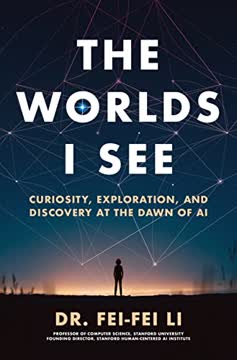

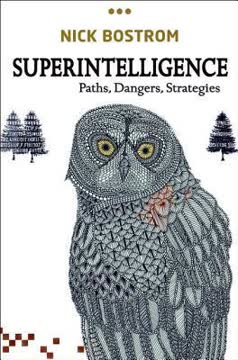

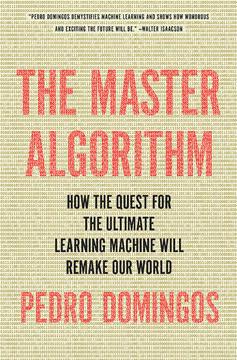
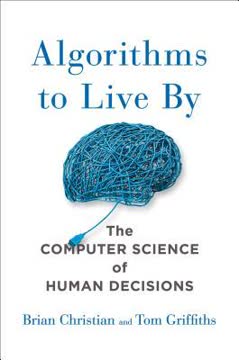

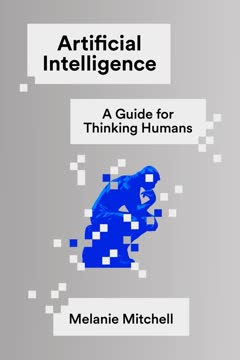
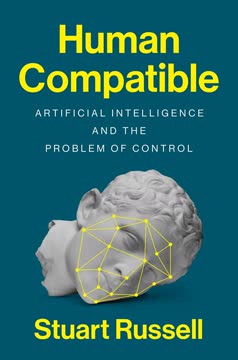
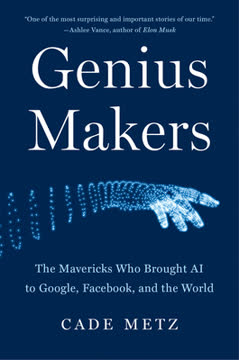
Download PDF
Download EPUB
.epub digital book format is ideal for reading ebooks on phones, tablets, and e-readers.





